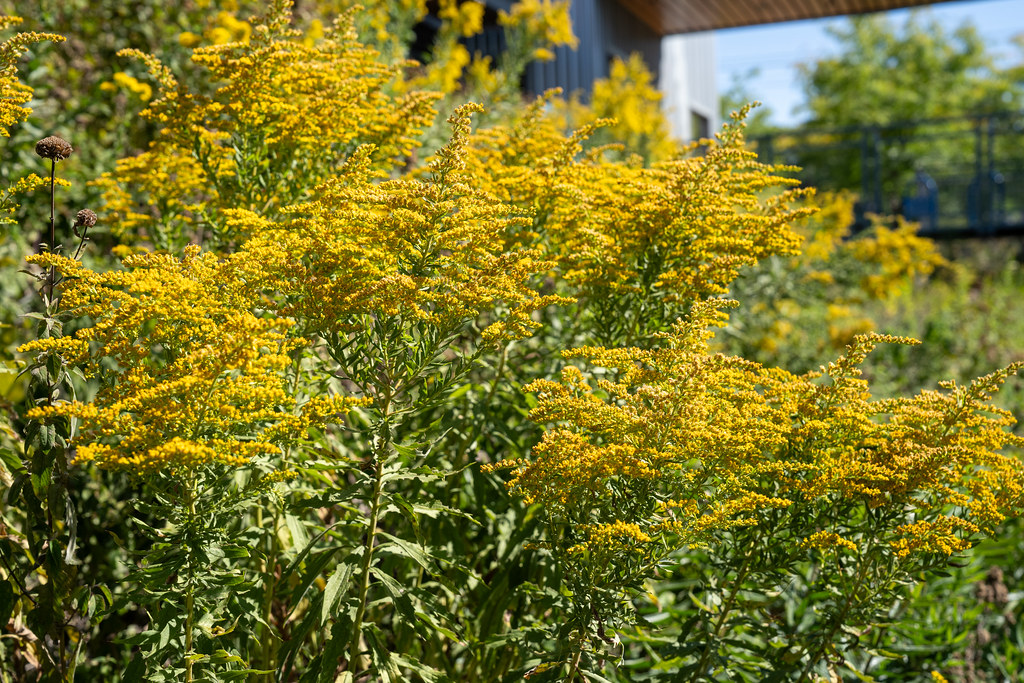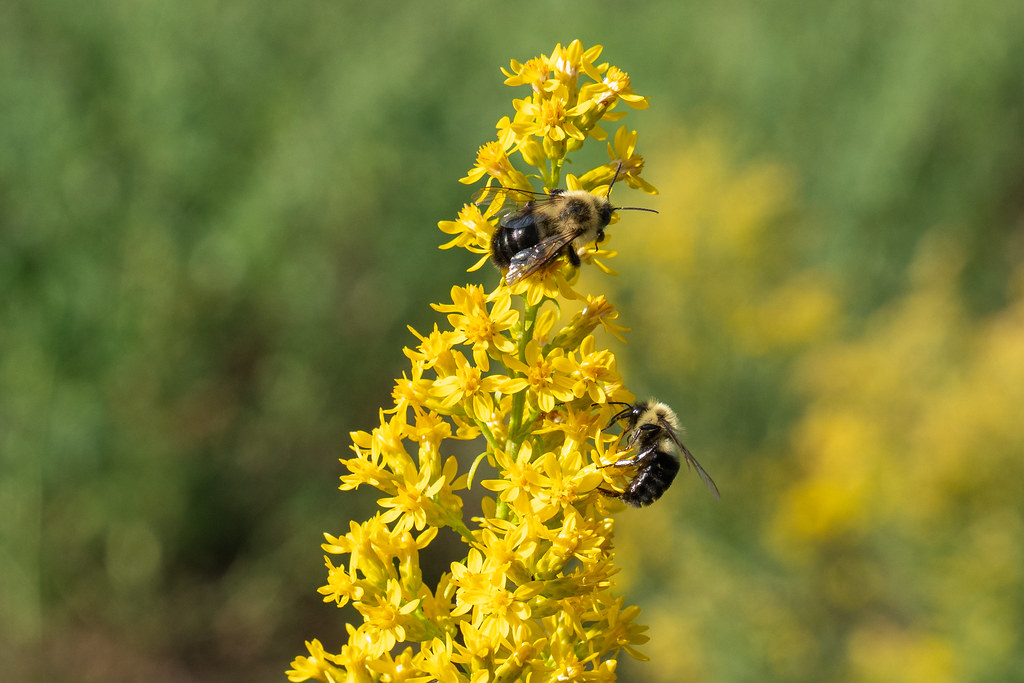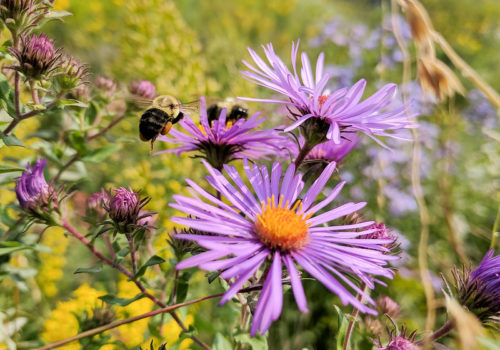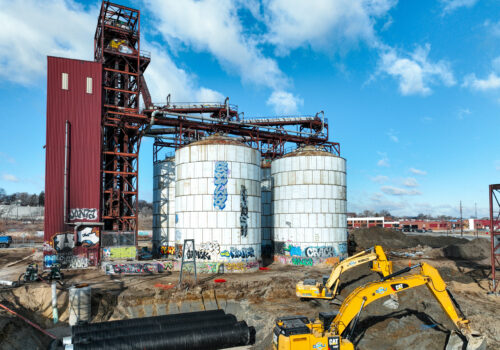News / September 14, 2023
Of Goldenrod and Aster: Fall Wonders Take Hold in Local Landscapes

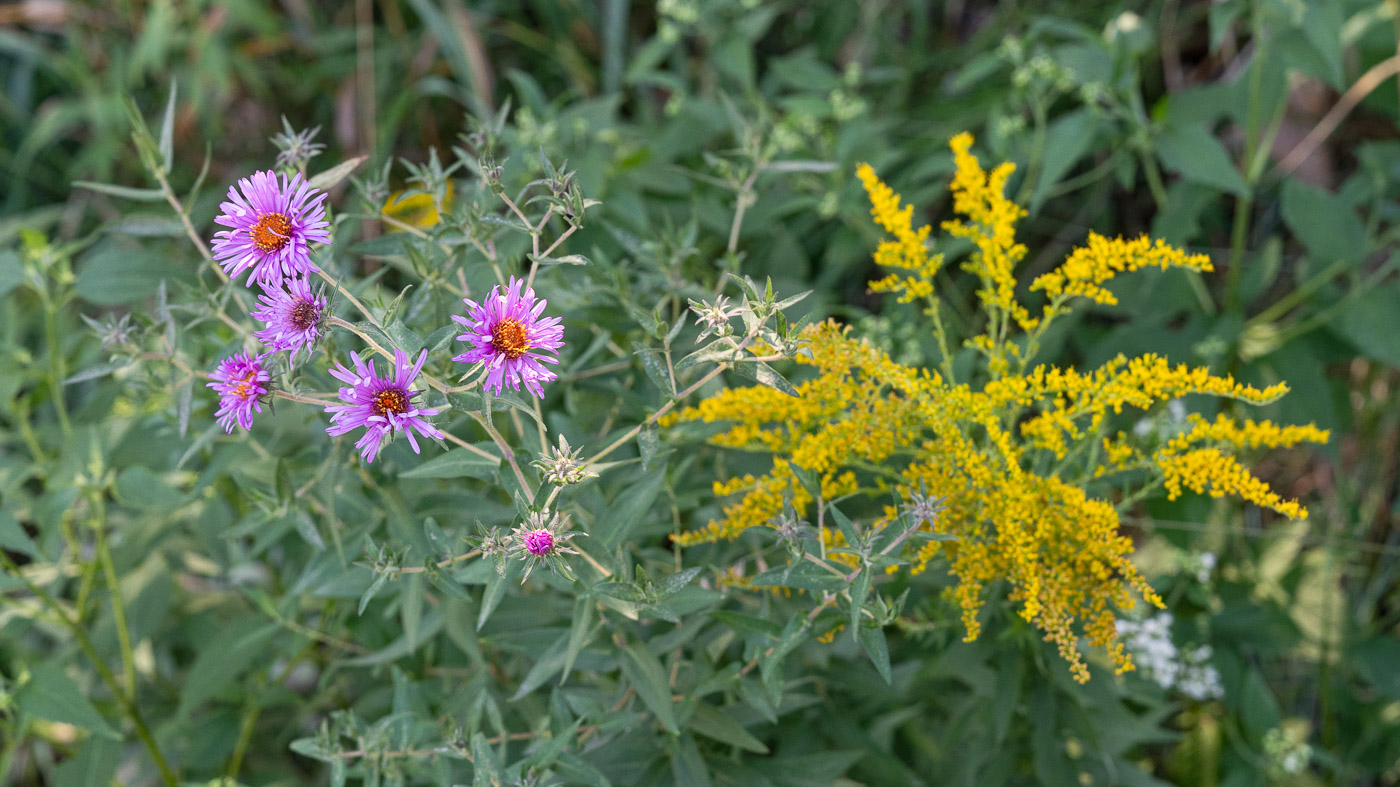
There is something special about the late-blooming flowers of our region. Strong brush strokes of yellow dotted in seas of greens turning to browns, and the small pops of white, purple, and periwinkle are particularly stunning in prairie plantings and natural areas. The goldenrods and asters mark the turning of the growing season towards something more restful. This time of year, you can really enjoy the calm of cool days to come while getting those last beautiful glimpses of seasonal flowers.
Goldenrods and asters are a part of the Asteraceae (or Daisy) family, which is second only to the Orchid family in terms of the number of known species. While seemingly ubiquitous to those not looking closely, goldenrod species actually vary quite a bit. Most species sport yellow flowers with considerably differing forms. As prolific seeders that spread by wind dispersal, goldenrods are simple to grow and establish in new places. As a result, they spread easily throughout natural areas, intermittent spaces, and planted landscapes.
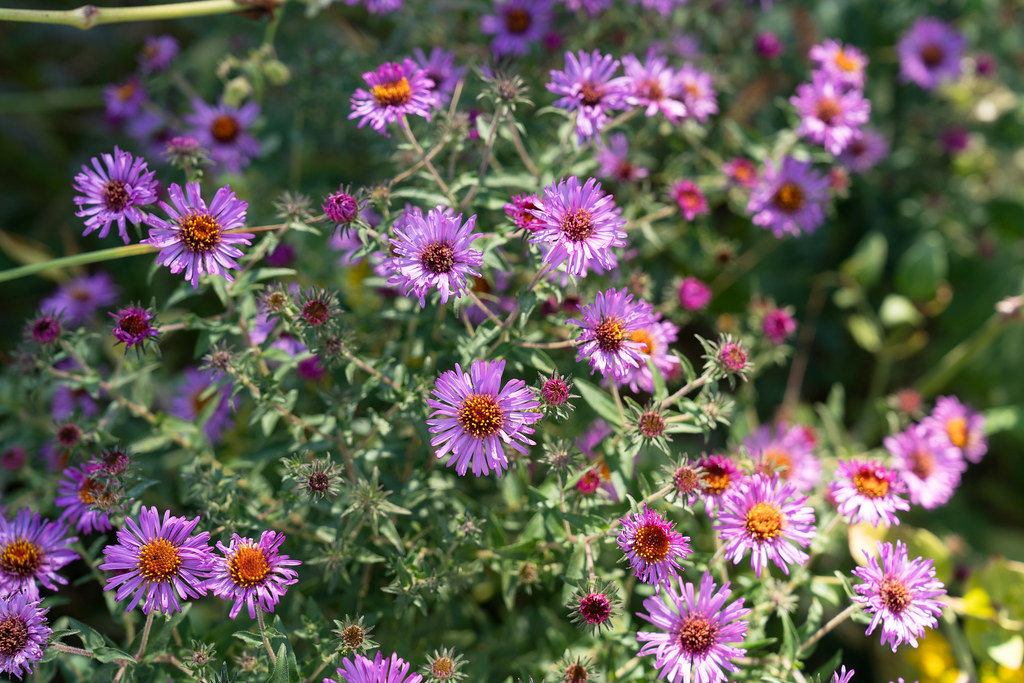
Asters provide some much-needed variation in color amidst seas of golden flowers. Their flower petals typically range from white to purple. Asters also have a distinct, warm-hued centers that range from yellow to orange and turn colors as they age. One remarkably striking specimen is the New England aster, whose flowers can grow up to one hundred spectacular purple petals, proving to be a magnet for the eyes this time of year.
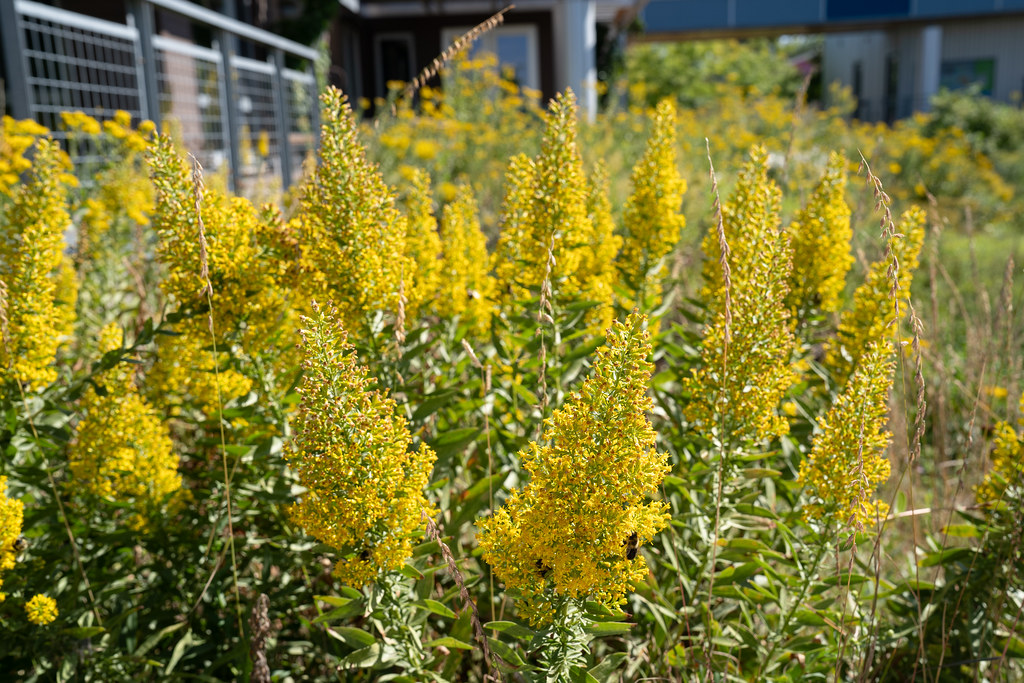
There is also a buzz as insects hop between the flowers. Pollinators need to harvest as much as they can before winter sets in. It’s important to remember that pollinator habitat isn’t just about providing nectar and pollen; it’s also about creating nesting sites. In this sense, native plants often provide a host of benefits for pollinating bees, flies, butterflies, moths, beetles, and more.
Goldenrods are considered a keystone species in many ecosystems, meaning they are crucial to keeping those systems functioning properly. Goldenrods and asters are critical nectar sources for local and migratory species in late summer and fall. Further, both plants can host larvae and seeds that are important for foraging bird species from late fall through winter.
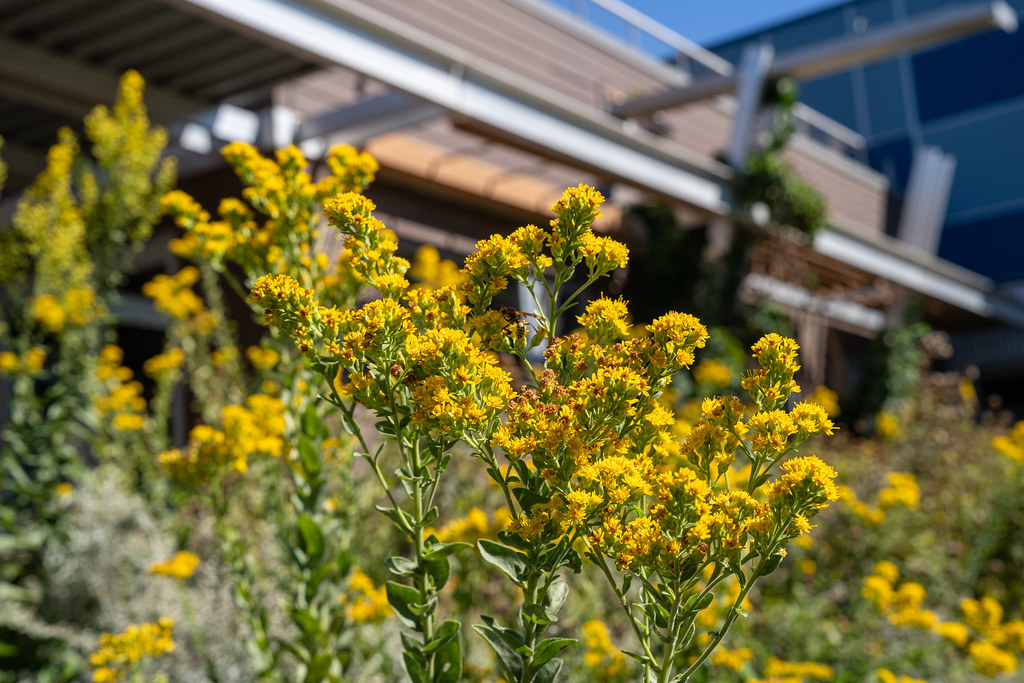
Native plants provide stacked benefits and are increasingly important from an ecological perspective. Insects are key in supporting the web of life. Growing and maintaining plants that have coevolved with local insect species is the best way to support insects, especially as we see alarming insect population decline worldwide. Further, native plants are well adapted to the local climate, more resilient to changing climates, and far better at letting water soak into the ground as they filter pollutants and recharge groundwater.
It’s never too late to add native plant diversity to your yard, garden, or those weird spots between impervious surfaces. If you want to add goldenrods and asters to the landscape, you can purchase native plants or seeds from local nurseries. Or you can gather, collect, and spread seeds of your own (so long as it’s appropriate to do so — some spaces like state parks and scientific and natural areas do not permit collection). Either way, more goldenrods and asters will add color to the landscape as summer turns to fall.
